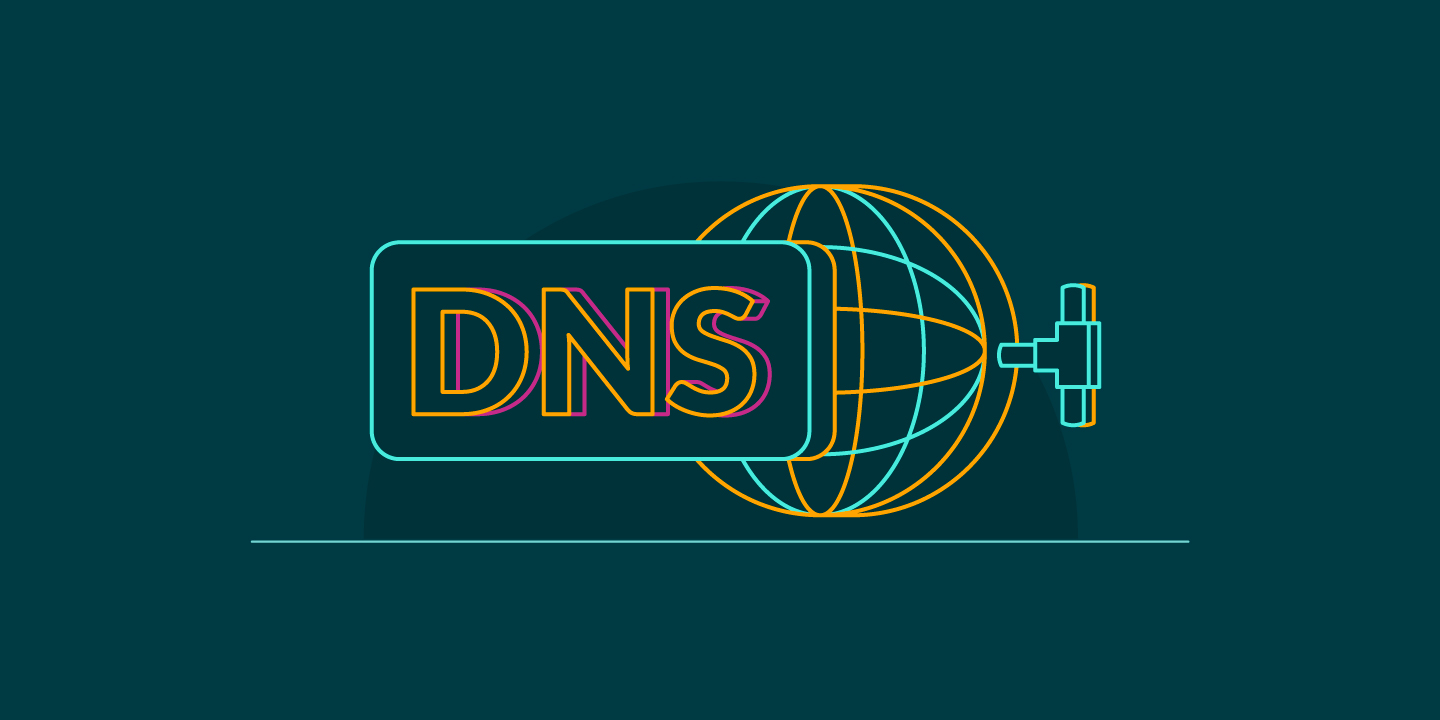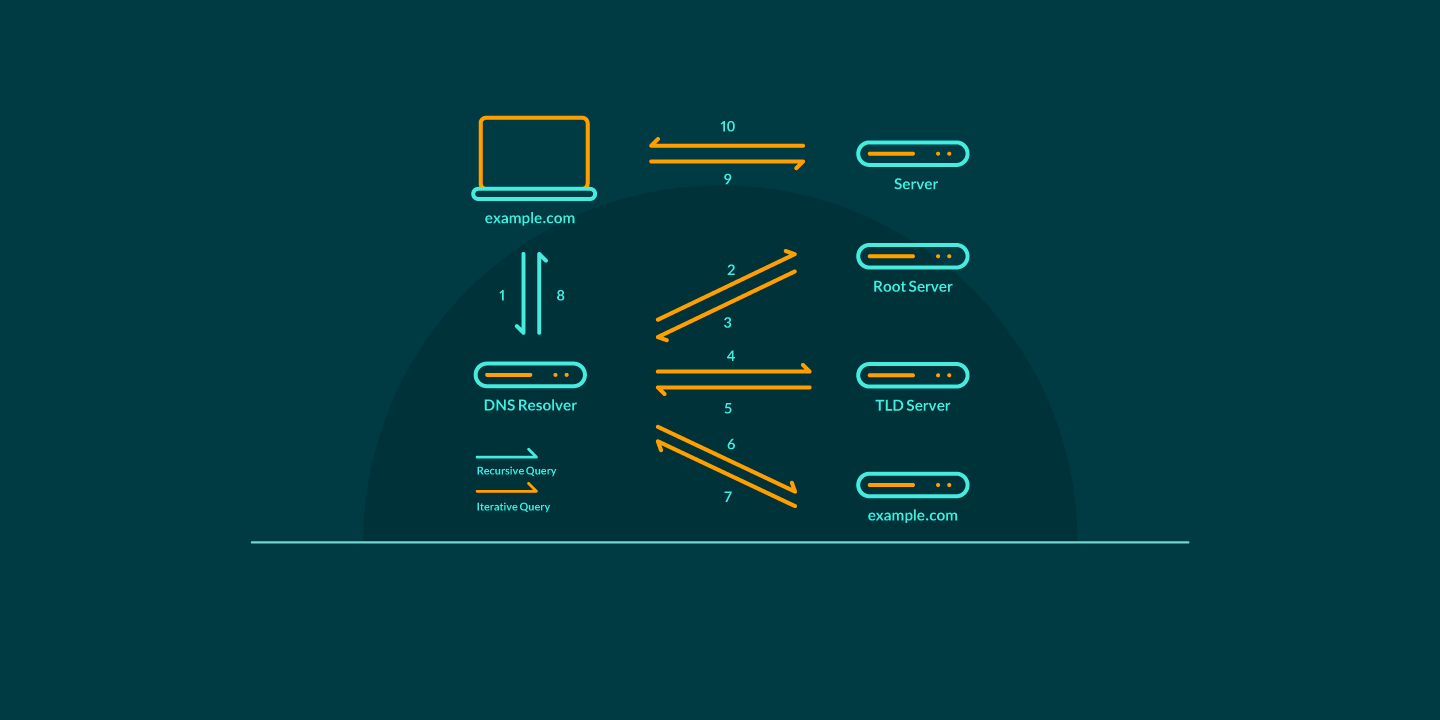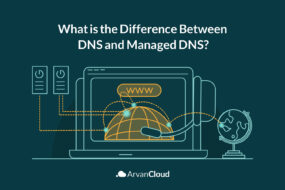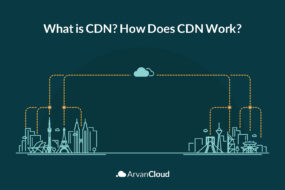
Do you know anything about DNS and how it works? Are you familiar with the network concepts of DNS resolvers and DNS records? If you want valuable and practical information about these topics, join us in this article.
You may not have heard of DNS, but it describes the system used by your computer or device whenever you click on a link, open an app, send an email, etc.
Whenever you click on a link on a website, your computer searches for its DNS information. DNS is a database of Internet addresses. When searching for information on the Internet, you will submit a DNS request. DNS is simply a list of names corresponding to IPs which is what computers communicate with.
In this article, we will investigate DNS.
What Is a DNS Server?
DNS is a phone book for the Internet. In the Internet world, people access information through domain names like nytimes.com and arvancloud.ir. Browsers communicate using Internet Protocol (IP) addresses. DNS translates domain names into IPs, allowing browsers to load Internet resources.
The DNS Server is a computer that completes the name resolution process when a query is made. DNS servers maintain zone files that enable them to resolve names for IPs and IPs for names. DNS servers respond in one of three ways when a query is sent to them:
- The server return data about name resolution or IP resolution
- The server provides a pointer to another DNS server that can deal with the request
- The server indicates that it was unable to provide the requested information
A DNS Server might request other DNS Servers during the process of returning the requested resolution data, but beyond that, it does not perform any other actions.
How Does a DNS work?
When your computer wants to find the IP address associated with a domain name, it first makes a DNS query via a DNS client, typically in a Web Browser. The query then goes to a recursive DNS server, also known as a recursive resolver.
In a recursive resolver, Internet Service Providers (ISPs) such as AT&T or Verizon, or third parties, are responsible for knowing which other DNS servers they need to contact to resolve a site’s name with its IP address. Those servers that possess the information are called authoritative name servers.
It is a hierarchical system. DNS queries for IP addresses are initially made to recursive resolvers. The search leads first to the root server, which contains information on top-level domains such as com, net, and countries domains. DNS routes the request to the nearest root server since root servers are located worldwide.
When a request reaches the correct root server, it goes to a TLD nameserver, which keeps the information about the second-level domain, and the words you type into a search box. Upon requesting the IP address, the domain nameserver looks up the address and sends it back to the DNS client device, which can then visit the appropriate website. This process takes just a few milliseconds.
Let’s see how a DNS works step by step with an example:
- Step 1: Request Information
You enter the domain name into your web browser, and a DNS lookup is run to find the local answer where the website is located. DNS acts like an intermediary.
- Step 2: Root Servers
DNS asks the root server for the IP address. They don’t have the answer to your question, but they know where to find it. The solution of the root servers is the address of the name servers (TLD top-level domain). In the case of www.get.tech, these are the Tech name servers.
- Step 3: TLD Name Servers (Top Level Domain)
DNS now asks the TLD nameserver for the IP address of the domain name. The TLD nameserver responds with a valid domain name server address. In our example, the .TECH nameserver provides the addresses of the correct name.tech servers.
- Step 4: Valid DNS Servers
Valid DNS servers maintain DNS records for domain names necessary for DNS resolution. These records are ideally kept in a file by the domain owner or a technical administrator responsible for managing the performance of a domain name. There are different records in a zone file. For example, the server’s IP address where the website is hosted is represented by a record, usually called “A”.
- Step 5: Record Retrieval
The responding Name Server asks the A Record related to the www.get.tech domain from the valid name servers and stores this record in the local cache. If anyone else requests the host records of this site, the returned nameservers will have their answer and no longer need to run the lookup process.
All records have a value called time-to-live or (TTL), which acts like an expiration date. After some time, fallback name servers must request a new version of these records to ensure they have not expired.
- Step 6: Website Address
The server sends the A record to your computer. The PC saves this record, reads the IP, and transmits the information to your browser. This establishes a connection to the web server, and you can see www.get.tech content. Although it seems like a long and complicated process, it only takes a few milliseconds to complete the entire DNS process.
With this system, users who visit your website only need to know your domain name. If there are any updates to the website or domain name, the DNS will also be updated to point to your new server IP address. Your visitors are still only visiting your site using your domain name. Even if your IP address has changed. This kind of flexibility is what makes the Internet so powerful.
Different Types of DNS
Generally, there are three types of DNS servers – primary servers, secondary servers, and caching servers.
Primary Server
An authoritative server for a zone is the primary server. All administrative tasks associated with the zone, such as creating subdomains or other similar tasks, must be done on the primary server. In addition, any changes to the zone files or modifications or additions to the RRs in the zone files must be carried out on the primary server. There is one primary server for every zone, except when Active Directory and Microsoft DNS Server are integrated.
Secondary Servers
A secondary DNS server is a backup of the primary DNS server. A zone transfer transfers all of the zone files to the secondary server. Any given zone can have as many secondary servers as necessary to provide load balancing, fault tolerance, and traffic reduction. Additionally, each DNS server can serve multiple zones simultaneously.
Depending on the DNS infrastructure, other DNS server roles may be used in addition to primary and secondary DNS servers, such as caching servers and forwarders.
Caching Servers
Caching servers, or caching-only servers, serve only cached queries for DNS responses, as their name suggests. They do not maintain zone files as secondary servers do; they perform queries, cache the answers, and return the results to the querying client instead of keeping zone files as other secondary servers do.
The fact that caching servers do not maintain zone files nor transfer zones when they are needed generates a great deal of network traffic compared to secondary servers that do so
What is a DNS Record?
DNS records are one of the most essential parts of the Internet infrastructure. Site administrators often use DNS records to meet their various needs. Fortunately, these records can be easily managed without needing information.
DNS is a system of a large scale of information and data, including IP addresses, domain names, hosting and web hosting, and other information registered for each site on the web.
Before the launch of this system, each user had to enter the IP address of that site to enter each site, and it was complicated to remember each IP.
DNS records act as instructions for the DNS server, so these records determine which IP address each domain name belongs to.
The DNS record includes writing rules and different and diverse commands to determine how servers respond to each request and what response to send.
Common Types of DNS Records
To maintain information about domains and respond to user requests to access the desired website/service, DNS uses various records. Some of the most essential DNS records are:
A Record
This record links a domain name to an IP address. In this record, the desired name refers to your site’s IP address, and your site’s IP address is returned as a response. So, your domain and site will be available with its IP address and the designated name.
AAAA record
An AAAA record is the same as an A record, except that IPv6 is assigned to a domain.
CNAME record
A domain name can be mapped to another domain name using a CNAME record. This record references the A record you set earlier. For example, you can map www.example.com to example.com using the CNAME record.
NS record
This record specifies a valid DNS server responding to DNS requests related to a specific domain and some of its subdomains (DNS Zone). For those subdomains or names that you want to be answered from another DNS server, you can add the NS record for that domain and enter the DNS address of your desired server to return the DNS information of that name.
SOA record
This record, like NS Record, gives information about the DNS zone. Information such as valid DNS of this zone, domain admin contact information, domain serial number, etc., are stored in this record.
MX record
The MX record or Mail Exchange Record is used to introduce the mail server address, which indicates the server’s email address to which the emails are directed or transferred. This record also has a Priority section, which indicates that emails are sent based on the priority of the servers. In DNS records, more than one MX Record can be defined, which can help distribute the load among Mail Servers.
TXT Record
TXT Record is used to add any description. Also, TXT records can be used for the SPF email verification system and to provide related information.
What Is a DNS Resolver?
DNS resolvers, also called resolvers, convert domain names into IP addresses on the Internet.
Each time your computer connects to a website using its domain name, such as “example.com,” it needs to know its IP address, a unique set of numbers. So it contacts a DNS resolver and gets the website’s current IP address.
In general, the DNS resolver is part of a decentralized DNS system. When you send your request to the resolver, it reaches out to other DNS servers to obtain the address.
The DNS resolver used by your computer is usually chosen by your ISP Internet service provider. If you want to use another DNS resolver for your network, you can configure your network to use it if you choose. You can alter this configuration in your operating system’s network settings or your home router’s administration interface.
What is a Cloud DNS?
Cloud DNS is a high-performance and flexible global domain name system (DNS) service that cost-effectively publishes your domain name in Global DNS. In fact, Cloud DNS allows you to publish your zones and records without managing DNS servers and software.
DNS is critical to the performance and reliability of your Internet applications and cloud services. DNS outages or slow DNS performance can lead to significant problems. By moving DNS to the cloud (Cloud DNS), you can significantly reduce the risks associated with availability limitations, security vulnerabilities, and performance limitations of your current DNS solution.
With a professional team and 24/7 support, Arvancloud provides the best Cloud DNS for your network. So, if you need Cloud DNS, don’t hesitate to contact our experts.







